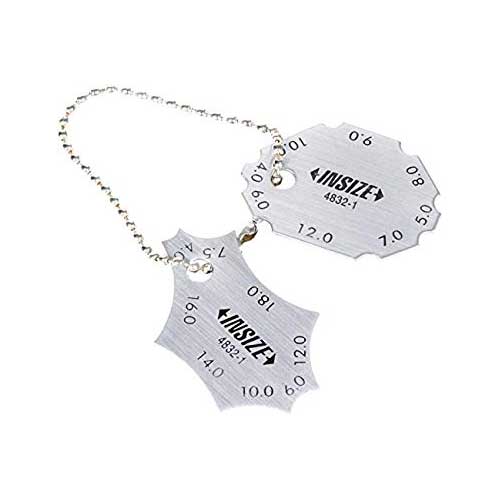Gauge Fillet Weld Essentials: Best Practices and Common Mistakes
Gauge Fillet Weld Essentials: Best Practices and Common Mistakes
Blog Article
Fillet Weld Layout Techniques: Enhancing Joint Efficiency and Visual Appeal for Structural Honesty
In the world of architectural design and construction, the importance of fillet weld design techniques can not be overstated. By diligently taking into consideration aspects such as weld profile optimization, product option, joint prep work techniques, welding procedure efficiency, and aesthetic enhancement techniques, designers and producers can achieve an unified balance in between capability and look in their bonded frameworks.
Weld Account Optimization


Accomplishing an optimum weld profile entails a careful factor to consider of elements such as product density, joint configuration, welding position, and wanted welding speed. Furthermore, the option of appropriate welding parameters, such as voltage, present, and take a trip speed, is basic in managing the form and dimensions of the fillet weld. Making use of advanced welding strategies, such as pulse welding or robotic welding, can further fine-tune the weld profile to fulfill specific design requirements and high quality standards.
Essentially, weld profile optimization is an essential element of fillet weld design that directly affects the total performance and reliability of bonded joints in structural applications.
Product Choice Factors To Consider
When thinking about material option for fillet weld style, the compatibility of the base steels is an important factor influencing the architectural integrity of the joint. It is important to choose materials that not only weld with each other properly however likewise have comparable mechanical properties to ensure the load is evenly distributed in between the base and the weld steels. Welding products with greatly different residential or commercial properties can result in issues such as stress concentrations, early joint failing, or splitting.
Furthermore, the environment in which the welded structure will certainly run should be taken right into account when choosing materials. Variables like corrosion resistance, temperature fluctuations, and exposure to chemicals can all influence the durability and performance of the weld joint. By picking materials that are suitable for the intended application and environment, the overall resilience and reliability of the welded joint can be dramatically improved.
Therefore, comprehensive factor to consider of product compatibility and ecological aspects is paramount in guaranteeing the weld joint's toughness, Continued sturdiness, and overall architectural stability.

Joint Preparation Techniques
Taking into consideration the crucial duty material choice plays in making certain the structural stability of fillet weld joints, it is crucial to carry out specific joint preparation methods that maximize the link between the base steels. Joint prep work is an essential step that straight affects the quality and strength of the weld. One essential technique is the cleansing of base steels to remove any kind of contaminants like rust, oil, or paint that could jeopardize the weld's stability. This can be accomplished with approaches such visit our website as grinding, cord cleaning, or chemical cleaning.
Furthermore, tack welding the components in area before the last weld helps preserve alignment and minimizes distortion throughout the welding process. By meticulously complying with these joint prep work techniques, welders can boost the total efficiency and aesthetics of fillet weld joints while ensuring structural sturdiness.
Welding Process Efficiency
Efficient welding processes are essential for attaining ideal productivity and top quality in fillet weld fabrication. One crucial aspect of enhancing welding process performance is selecting the proper welding technique. Elements such as product type, joint style, and welding placement must be very carefully thought about to determine one of the most suitable technique. For example, processes like gas metal arc welding (GMAW) and flux-cored arc welding (FCAW) are frequently made use of for fillet welds as a result of their flexibility and rate (Gauge Fillet Weld).
Moreover, guaranteeing appropriate devices arrangement and maintenance is essential for efficient welding. Normal calibration of welding machines, assessment of consumables, and maintenance of soldering iron can prevent downtime and rework, ultimately saving time and sources. In addition, using competent welders with experience in the details welding procedure being utilized can substantially affect performance. Well-trained welders are more adept at adjusting criteria, repairing problems, and preserving constant weld quality.
Aesthetic Improvement Approaches
To optimize the high quality of fillet weld construction, carrying out aesthetic improvement techniques can play a critical duty in ensuring precision and precision throughout the welding procedure. Aesthetic help such as weld size evaluates and amplifying lenses can aid in evaluating weld profiles and dimensions precisely. By integrating these visual enhancement techniques into the welding procedure, welders can accomplish not just structurally audio fillet welds however likewise visually attractive results that meet sector standards.

Conclusion
In conclusion, enhancing fillet weld design includes mindful consideration of weld profile, material choice, joint prep work, welding process read this post here performance, and aesthetic enhancement techniques. By applying these techniques, structural honesty can be boosted while also accomplishing visual allure. It is important to prioritize both efficiency and aesthetic appeals in fillet weld layout to ensure the overall high quality and durability of the joint.
By carefully considering elements such as weld profile optimization, material choice, joint prep work methods, welding procedure effectiveness, and aesthetic improvement makers, methods and engineers can accomplish a harmonious balance between functionality and appearance in their welded structures.In the realm of fillet weld style, enhancing the weld account plays an essential duty in ensuring architectural honesty and efficiency. The weld profile, which includes the size and shape of the weld cross-section, directly affects the circulation of stress and anxiety and load-bearing ability within the joint. It is essential to choose materials that not only weld together effectively but also have comparable mechanical residential or commercial properties to make certain the tons is uniformly distributed in between the base and the weld steels - Gauge Fillet Weld.In verdict, maximizing fillet weld style includes careful consideration of weld account, material selection, joint prep work, welding procedure effectiveness, and visual improvement techniques
Report this page